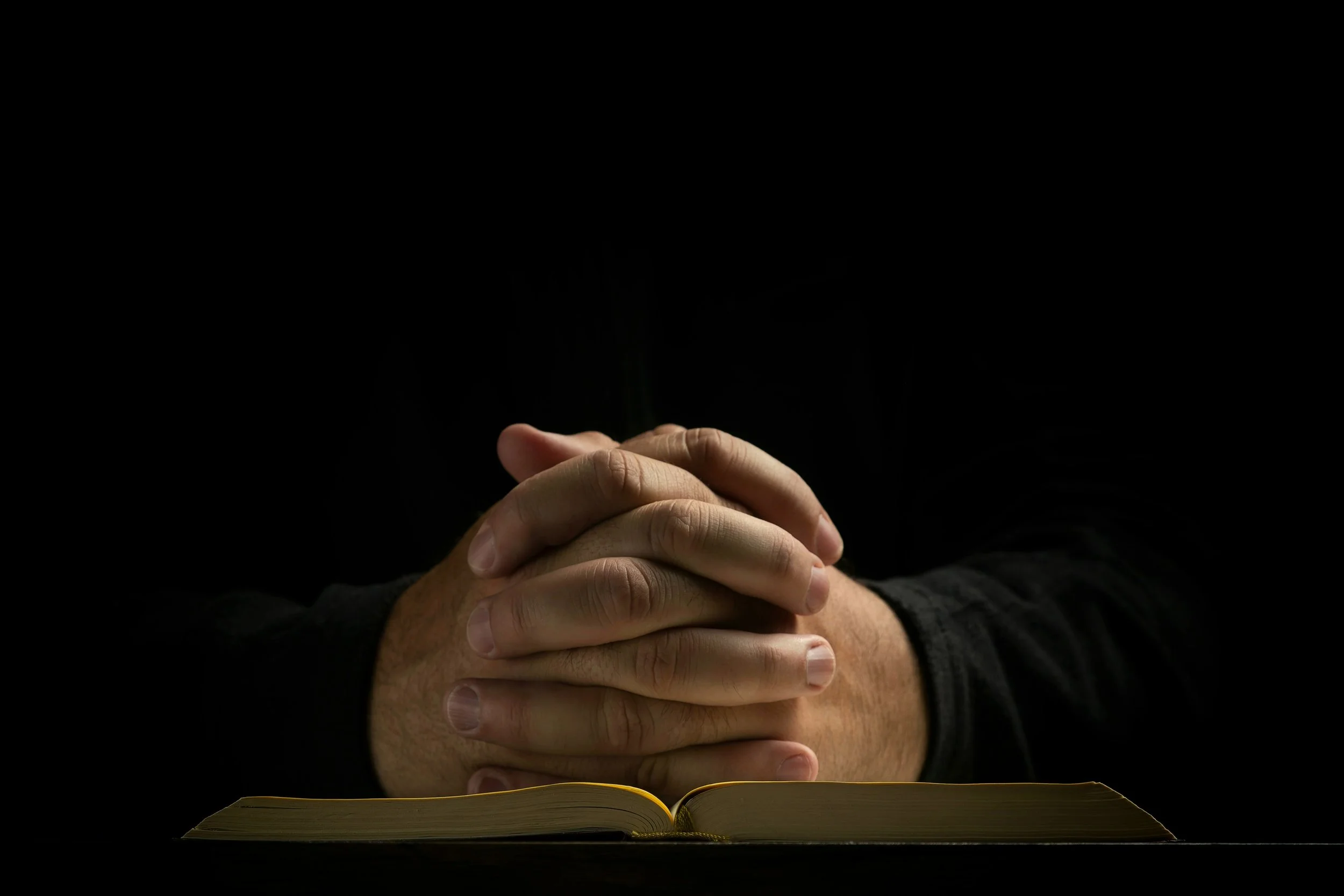Like all real and good things that take practice, prayer doesn’t always come easily. In fact, as we grow in prayer, we can expect to have seasons where it is downright difficult to pray. There are a lot of reasons for this. When the newness of a habit begins to wear off and we settle into a pattern, we begin to experience new challenges to our disciplines of prayer. It is important for us to remember that difficulties in prayer are not necessarily a sign we are doing something wrong. In fact, experiencing difficulty in prayer can be a sign that we are doing exactly what we need to do. Here are some of the common difficulties that face a person who is learning to pray.
Read MoreIn the past, I’ve written that healthy shame will turn toxic unless acted upon and held in health by a power beyond itself. Individuals and communities—including churches—will repeat cycles of toxic shame until someone intervenes. I have seen in pastoral conversations many attempts to ‘manage’ the voice of shame by negating it. We do this either through ignoring it or by trying to persuade ourselves that shame can tell us nothing and is merely a figment of a general atmospheric moralism. But no matter how boldly we shout I am not ashamed! we still are.
Read MoreThis post is about a way to approach contemplative prayer. I freely admit from the outset that I am no master of this art of ultimate trust in God’s love for me. Almost twenty years into my journey as an Anglican and over thirty into my life as a Christian, I am still unlearning the engrained habits of self-sufficiency.
Read MoreThis Lent, I am revisiting Martin Laird's remarkable little book, Into the Silent Land, as an aid to my contemplative prayer practice. For me—and I imagine I speak for many who have gone through St. Matthew's Pastoral Ministry class—Into the Silent Land was my first introduction to the Christian tradition of contemplative prayer.
Read MoreBe quiet and listen. What do you hear? Do you hear an aircraft overhead? Vehicles in the street outside? The air conditioning? Can you hear the compressor on the refrigerator? The fan of the computer? Most of the time these sounds fade into the background, but it’s amazing how acute one’s hearing gets when you sit down and attempt to pray. Especially when you attempt Contemplative Prayer.
Read MoreEASTER, the Day of the Resurrection, is the most important celebration of the Church. From the beginning, the Church observed a period of fasting before Easter to prepare for the feast. This season of fasting was lengthened to forty days to correspond to the forty day fasts in the Bible: The fast of Jesus in the wilderness before he was tempted by the devil (Matt. 4:1), the fast of Moses on Mt. Sinai while he was receiving the Ten Commandments (Exodus 34:28), and the fast of Elijah when he fled from Jezebel (1 Kings 19:8).
Read MoreAs we turn in this series to address my own tradition of Anglicanism and the major tendencies within it, we have to start by acknowledging that much of what makes Anglicans who they are arises out of the history of the place where they learned to pray.
Read MoreWhen the Wise Men are called to seek the Christ Child, they are drawn forth in a strange way: by an unusually bright star, shining in the heavens. In Matthew 2 we are told, “Now after Jesus was born in Bethlehem of Judea in the days of Herod the king, behold, wise men from the East came to Jerusalem, saying, ‘Where is He who has been born King of the Jews? For we have seen his star in the East and have come to worship him.’” We rarely pause to acknowledge how odd this story is.
Read MoreIt is a gift to be able to create. As human beings, we have been given the ability to imitate our Creator by exercising and developing our creativity. God creates from the beginning, bringing out of what is formless and void, giving it design, structure, function, and purpose. We create out of what God has made and entrusted to us, ordering our little worlds after the order, or logos, by which He made the heavens and the earth.
Read MoreWhen I was eighteen, my home life and family of origin underwent a sudden change from which it never really recovered. I still remember the lurch of what I thought was permanent and untouchable suddenly shifting under my feet. Like Lewis, I felt afraid. I felt cut off, even when surrounded by people. I felt deaf to the words they were trying to say to make me feel better, and even when their words got through, part of me still wanted their kind words to just go away. Yet I was terrified of being alone. Starting to sound familiar?
Read MoreWe have considered what it means to make our artistic vocations, as Evelyn Underhill puts it, “an oblation from the first.” As we consider how to do this in our own lives, I want to put the example of a specific artist before you.
Read MoreWe’ve considered the necessity of self-death through Christ in the life of the Christian artist. What’s next? What is the point of this self-death? Where does it go? Does my story, my particular identity, matter at all in my artistic practice?
Read MoreIn the first verses of Isaiah 40, God declares, “Comfort, yes, comfort My people! … Speak comfort to Jerusalem.” These first verses frame the chapter to follow as an extended meditation on comfort as God understands and offers it to his people.
Read MoreThe Rosary is a longtime church tradition. It began in the 9th century in various forms, until it was revealed to St. Dominic in 1221 A.D. by Mother Mary herself. From then on, through his religious order of the Dominicans, the Rosary was promoted and encouraged for all Christians.
Read MoreIn the past, I’ve written that healthy shame will turn toxic unless acted upon and held in health by a power beyond itself. Individuals and communities–including churches–will repeat cycles of toxic shame until someone intervenes. I have seen in pastoral conversations many attempts to ‘manage’ the voice of shame by negating it. We do this either through ignoring it or by trying to persuade ourselves that shame can tell us nothing and is merely a figment of a general atmospheric moralism. But no matter how boldly we shout I am not ashamed! we still are.
Read MoreSince last year, Timothy Lawrence and I adopted the tradition to read and discuss Dante’s Divine Comedy throughout the Lenten fast. This reading course was outlined by Fr. Hayden a few years prior for his students at Pacifica. As if enduring the silence and temptations of Lent are not enough, adding a medieval poetry epic about the 9 circles of hell, 7 levels of purgatory, and 9 spheres of heaven to that is a good penance. During the first few chapters, there is an emphasis on losing the way. As I mentioned in last week’s blog, Lent reveals much about ourselves. Our fears. Our worries. Our anxiety.
Read MoreIt sometimes surprises new practitioners of Lenten disciplines when they do the math and find that there are not forty but forty-six days between Ash Wednesday and Easter Sunday. How do we account for the additional days? It is then that they learn of Sunday as a blessed relaxation of the Fast in observance of our weekly remembrance of the Lord’s Day of Resurrection. The Lenten Sunday puts a point on what is true of every Sunday: it is both a looking back and a looking forward. It is a perpetual memorial of Easter until Christ returns to raise and judge the quick and the dead.
Read More“In December 2016, I watched one of the most emotionally intense and scarring movies of my life on the big screen that had me questioning parts of my faith. This movie was Silence, written and directed by Martin Scorsese. Based on the novel by Shusaku Endo, Silence follows two Jesuit Priests, Fr. Rodrigues, and Fr. Garupe, leaving their home in Portugal to bring the Gospel to Japan and to discover the whereabouts of a well-known Priest who committed apostasy. Throughout the film, the themes of silence, despair, and hope appear and reappear. The scene that never left my mind was one during one of Fr. Rodrigues’ prayers.”
Read MoreLike all real and good things that take practice, prayer doesn’t always come easily. In fact, as we grow in prayer, we can expect to have seasons where it is downright difficult to pray. There are a lot of reasons for this. When the newness of a habit begins to wear off and we settle into a pattern, we begin to experience new challenges to our disciplines of prayer. It is important for us to remember that difficulties in prayer are not necessarily a sign we are doing something wrong. In fact, experiencing difficulty in prayer can be a sign that we are doing exactly what we need to do. Here are some of the common difficulties that face a person who is learning to pray:
Read MoreWe have faced the blank page. We have attended to silence. And we have accomplished an incredibly brave thing: we have gotten something on the page. It is not blank anymore—we are free to keep working toward a finished piece, whatever that might be, however many drafts it may take us to get there. We have committed to the creative act, and to whatever it may show us as we follow it through.
Read More



















